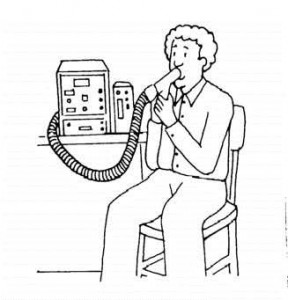There is no study showing an increased risk during surgery for the general asthma population.1 However, there is an increased risk for asthmatic patients with reduced lung function (FEV1). The incidence of severe asthmatic attack during surgery is low but it may be life threatening.
Symptoms
Patient will experience similar symptoms such as cough, wheezing, shortness of breath on minimal exercise, chest tightness which is persistent despite taking medication as ordered by the doctor.
Management
For planned surgery , meticulous attention should be paid before surgery to achieve good asthma control as detailed elsewhere in asthma treatment especially for patients with more severe asthma and uncontrolled symptoms.2 This includes assessment with simple lung function test (spirometry) pre operatively and early referral to a physician.
For patients requiring emergency surgery, the risks of surgery without first achieving good asthma control should be weighed against the need for immediate surgery.
What is lung function test?
Lung function test is a test that measures the lung function, specifically the amount (volume) and/or speed (flow) of air that can be breathed in and breathed out. This will help the doctor quantify the severity of asthma control and step up the medicine if necessary.

Source: www.netpatient.dk
Complications
Please refer to complications of uncontrolled asthma.
Prevention
For all patients, maintaining regular controller therapy throughout the peri-operative period is important.
The patient should be compliant to medication and doctor’s advice. Avoid any activity or environmental factor that might trigger an asthmatic attack.
The patient should receive pneumococcal and influenza vaccinations to prevent them from getting serious infection prior to surgery.
Early referral to a physiotherapist before surgery for breathing exercise is mandatory. Post-surgery, continuous physiotherapy should be done especially after abdominal surgery to prevent lung infection and lung collapse. The patient should receive adequate painkiller to encourage them to do breathing exercise.
References:
- Smetana GW et al.Preoperative pulmonary risk stratification for noncardiothoracic surgery: systematic
review for the American College of Physicians. Ann Intern Med 2006;144:581-95 - Woods BD et al. Perioperative considerations for the patient with asthma and bronchospasm. Br J Anaesth 2009;103 Suppl:157-65
- Refer http//www.ginasthma.org/document/4
| Last Reviewed | : | 16 Mei 2016 |
| Writer | : | Dr. Kasuma bt. Mohd Nordin |
| Accreditor | : | Dr. Jamalul Azizi b. Abdul Rahaman |
 PENDIDIKAN PESAKIT Kementerian Kesihatan Malaysia
PENDIDIKAN PESAKIT Kementerian Kesihatan Malaysia


